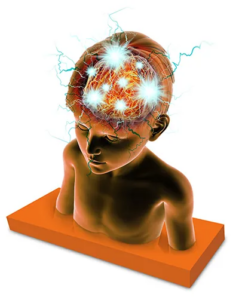 What is a Grand Mal Seizure?
What is a Grand Mal Seizure?
A grand mal seizure is what most people typically think of when hearing the word “seizure”. Grand mal seizures are caused by abnormal electrical signals that fire throughout the brain. There are several different causes, including epilepsy, stroke, low blood sugar, infections, and drug and alcohol withdrawal.
What Happens During a Grand Mal Seizure?
During a grand mal seizure, a person loses consciousness and typically falls to the ground. Their muscles will contract and will eventually alternate between flexing and relaxing, which causes convulsions. Other symptoms may occur either during the seizure or right after, like screaming, loss of bowel and bladder control, unresponsiveness, confusion, fatigue, and headaches.
How to Perform Seizure First Aid: During the Seizure
Before you call 911, you need to make sure the person is safe during the seizure. This can be done by:
- placing the person on their side (also called the “recovery position”)
- place a soft object underneath their head (pillows, jackets, etc.)
- loosen restrictive clothing from around their neck
- removing objects from around the person that may cause injury
At this point, call 911 for assistance and time the seizure to see how long it lasts.
How to Perform Seizure First Aid: After the Seizure
Once the person stops convulsing, it is important to tell them what happened in simple language, reorient them to their situation, and reassure them. For example, you can tell the person “You just had a seizure. An ambulance is on its way. You are safe”.
DO NOT LEAVE THE PERSON UNTIL EMERGENCY SERVICES ARRIVE. It is critical to continue to monitor the person and watch for:
- difficulty breathing
- a seizure lasting over 5 minutes
- having another seizure soon after the first
A seizure lasting over 5 minutes or having another seizure soon after is called Status Epilepticus and is a MEDICAL EMERGENCY.
What NOT to do During a Grand Mal Seizure: Common Misconceptions vs Facts
When caring for someone who is seizing, do NOT restrain or restrict the person’s movements or place anything in the person’s mouth. This can cause injury to the seizing person. Many bystanders first reaction may be to restrain the victim, place something in their mouth, or a combination of the two. This is because these misconceptions are depicted through television shows, movies, and urban legends. Television shows such as General Hospital and movies like One Flew Over the Cuckoo’s Nest depict seizure activity with a medical professional performing at least one of these actions. Urban legends have also spread about people swallowing their tongues while having grand mal seizures, so placing an object in their mouth prevents this from occurring. It is impossible for a human to swallow their tongue as it is firmly attached to the mouth through soft tissues. Placing an object in a seizing person’s mouth would only block their airway and possibly injure their teeth and jaw.
References
Centers for Disease Control and Prevention. (2022, January 3). Seizure first aid. https://www.cdc.gov/epilepsy/about/first-aid.htm
Mayo Clinic. (2021, February 24). Grand Mal seizure – Symptoms and causes. https://www.mayoclinic.org/diseases-conditions/grand-mal-seizure/symptoms-causes/syc-20363458
Rank, W. P. (2020). Seizure first aid for bystanders. Nursing, 50(10), 11-12. https://doi.org/10.1097/01.nurse.0000697196.36554.fe
Rossi, K. C., Baumgartner, A. J., Goldenholz, S. R., & Goldenholz, D. M. (2020). Recognizing and refuting the myth of tongue swallowing during a seizure. Seizure, 83, 32-37. https://doi.org/10.1016/j.seizure.2020.09.023
